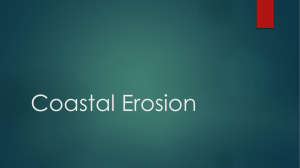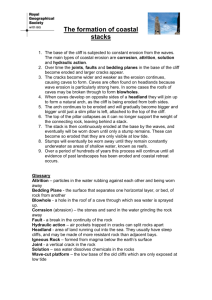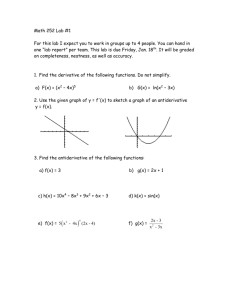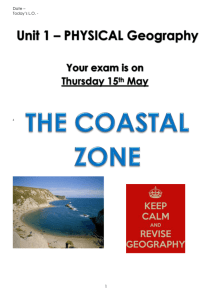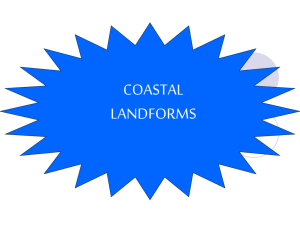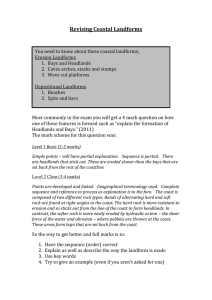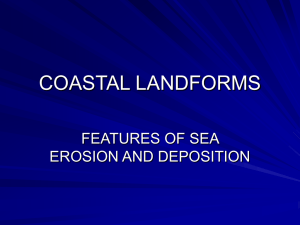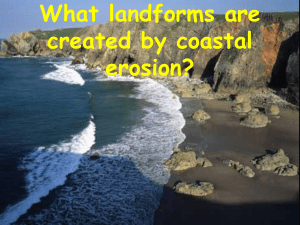Coastal Features Headlands and Bays
advertisement
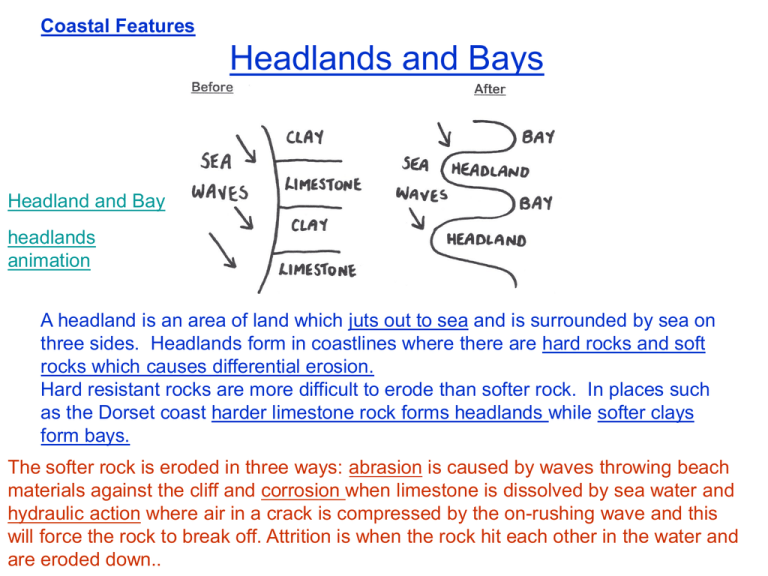
Coastal Features Headlands and Bays Headland and Bay headlands animation A headland is an area of land which juts out to sea and is surrounded by sea on three sides. Headlands form in coastlines where there are hard rocks and soft rocks which causes differential erosion. Hard resistant rocks are more difficult to erode than softer rock. In places such as the Dorset coast harder limestone rock forms headlands while softer clays form bays. The softer rock is eroded in three ways: abrasion is caused by waves throwing beach materials against the cliff and corrosion when limestone is dissolved by sea water and hydraulic action where air in a crack is compressed by the on-rushing wave and this will force the rock to break off. Attrition is when the rock hit each other in the water and are eroded down.. CLIFF & PLATFORM Wave erosion is greatest where longer waves break against the foot of the cliff; this forms a wave-cut notch. As the notch gets bigger the cliff above is left unsupported and collapses due to gravity. This continues and the cliff retreats and increases in height. The gentle sloping expanse of the retreating cliff is called a wave cut platform. (Explain the four processes of erosion from the Headland and Bay note ) Platform animation Notch and Platform Caves, Arches and Stacks and stumps Stack diagram stack photos Durdle door old man of Hoy 1. Waves attack areas of weakness such as a joint or a fault. 2. A sea cave is formed in the headland and is deepened and widened over a long period of time.( if choosing this feature in paper one you explain abrasion and hydraulic action at this part) 3. The sea eventually cuts through the headland to form an arch. 4. Waves continue to erode the foot of the arch until its roof becomes too heavy and collapses due to gravity. The roof of the arch is also eroded by freeze thaw action causing it to collapse. 5. This leaves part of the headland cut off to form a stack. 6. The stack is then undercut by waves and collapses to form a stump. 7. Occasionally water rises up a vertical joint and is ejected as a blow hole. Slumping slumping Where the sea undercuts soft clay cliffs slumps often occur. This is also common after an earthquake. Rapid movement of material. A whole section of a slope gives way when unsupported rock begins to slide. After heavy rain the surface becomes saturated and much heavier and liable to slide. The rain also lubricates the underlining rock making the rock easier to slide. Slumping Features of Coastal Deposition Material which is eroded from the coastline is transported by longshore drift. Longshore Drift Waves approach the beach at an angle from the direction the wind is blowing. When the wave breaks the material is carried up the beach at the same angle at which the wave approached the shore (swash). As the wave dies away the backwash returns materials at right angles to the water under the influence of gravity. Material is moved along the coast in a zig-zag course. Animation of longshoredrift Where this transported material reaches an area where the water is sheltered and waves lack energy e.g. This material is deposited to form a beach. Where there is a sudden change in the coastline such as in a river estuary a long narrow length of sand or shingle extends out to the sea to form a spit. If the spit extends or grows to reach the other side then a sandbar is formed. These are unlikely to form if the estuary has strong tides or the estuary is too deep. The sea is relatively sheltered and shallow and a salt marsh is formed behind the spit. Saltmarsh Spit Bars After the last Ice Age sea levels rose as the ice and snow Spit melted. stages Many coastal areas were drowned creating Rias. A Riadiagram is a drowned river valley. Rias are winding valleys with gentle sides.
